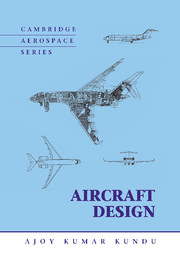Book contents
- Frontmatter
- Contents
- List of Symbols and Abbreviations
- Preface
- Road Map of the Book
- 1 Introduction
- 2 Methodology to Aircraft Design, Market Survey, and Airworthiness
- 3 Aerodynamic Considerations
- 4 Aircraft Classification, Statistics, and Choices for Configuration
- 5 Aircraft Load
- 6 Configuring Aircraft
- 7 Undercarriage
- 8 Aircraft Weight and Center of Gravity Estimation
- 9 Aircraft Drag
- 10 Aircraft Power Plant and Integration
- 11 Aircraft Sizing, Engine Matching, and Variant Derivative
- 12 Stability Considerations Affecting Aircraft Configuration
- 13 Aircraft Performance
- 14 Computational Fluid Dynamics
- 15 Miscellaneous Design Considerations
- 16 Aircraft Cost Considerations
- 17 Aircraft Manufacturing Considerations
- Appendix A Conversion
- Appendix B International Standard Atmosphere
- Appendix C Aerofoils
- Appendix D Case Studies
- Appendix E Tire Data
- References
- Index
6 - Configuring Aircraft
Published online by Cambridge University Press: 05 June 2012
- Frontmatter
- Contents
- List of Symbols and Abbreviations
- Preface
- Road Map of the Book
- 1 Introduction
- 2 Methodology to Aircraft Design, Market Survey, and Airworthiness
- 3 Aerodynamic Considerations
- 4 Aircraft Classification, Statistics, and Choices for Configuration
- 5 Aircraft Load
- 6 Configuring Aircraft
- 7 Undercarriage
- 8 Aircraft Weight and Center of Gravity Estimation
- 9 Aircraft Drag
- 10 Aircraft Power Plant and Integration
- 11 Aircraft Sizing, Engine Matching, and Variant Derivative
- 12 Stability Considerations Affecting Aircraft Configuration
- 13 Aircraft Performance
- 14 Computational Fluid Dynamics
- 15 Miscellaneous Design Considerations
- 16 Aircraft Cost Considerations
- 17 Aircraft Manufacturing Considerations
- Appendix A Conversion
- Appendix B International Standard Atmosphere
- Appendix C Aerofoils
- Appendix D Case Studies
- Appendix E Tire Data
- References
- Index
Summary
Overview
The coursework now starts with this chapter. It follows the mock market study in Chapter 2, which generated customer-specified aircraft requirements. Civil and military aircraft configuration layouts are addressed separately because of the fundamental differences in their approach, especially in the layout of the fuselage. A civil aircraft has “hollow” fuselages to carry passengers. Conversely, a combat-aircraft fuselage is densely packed with fixed equipments and crew members.
Industry uses its considerable experience and imagination to propose several candidate configurations that would satisfy customer (i.e., operator) requirements and be superior to existing designs. Finally, a design is chosen (in consultation with the operators) that would ensure the best sale. In the coursework, after a quick review of possible configurations with the instructor's guidance, it is suggested that only one design be selected for classwork that would be promising in facing market competition. This chapter describes how an aircraft is conceived, first to a preliminary configuration; that is, it presents a methodology for generating a preliminary aircraft shape, size, and weight. Finalizing the preliminary configuration is described in Chapter 11.
The market specification itself demands improvements, primarily in economic gains but also in performance. A 10 to 15% all-around gain over existing designs, delivered when required by the operators, would provide market leadership for the manufacturers. Historically, aircraft designers played a more dominant role in establishing a product line; gradually, however, input by operators began to influence new designs. Major operators have engineers who are aware of the latest trends, and they competently generate realistic requirements for future operations in discussion with manufacturers.
- Type
- Chapter
- Information
- Aircraft Design , pp. 149 - 190Publisher: Cambridge University PressPrint publication year: 2010

